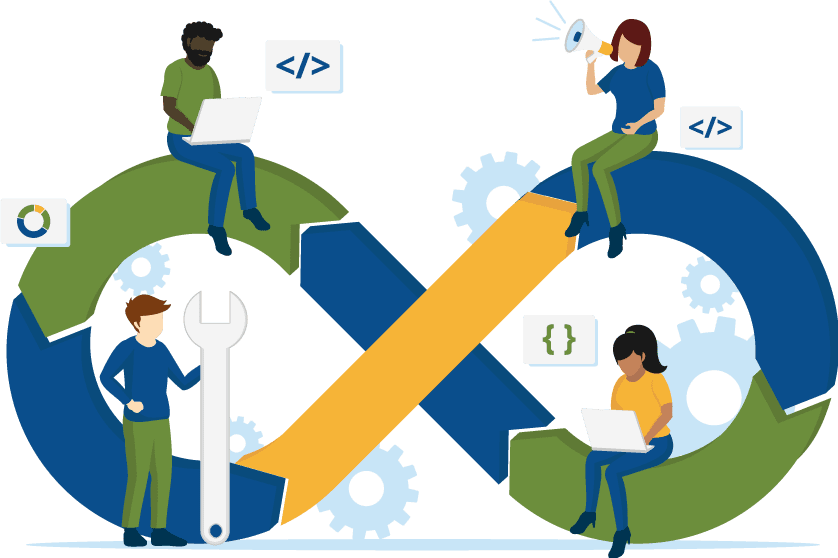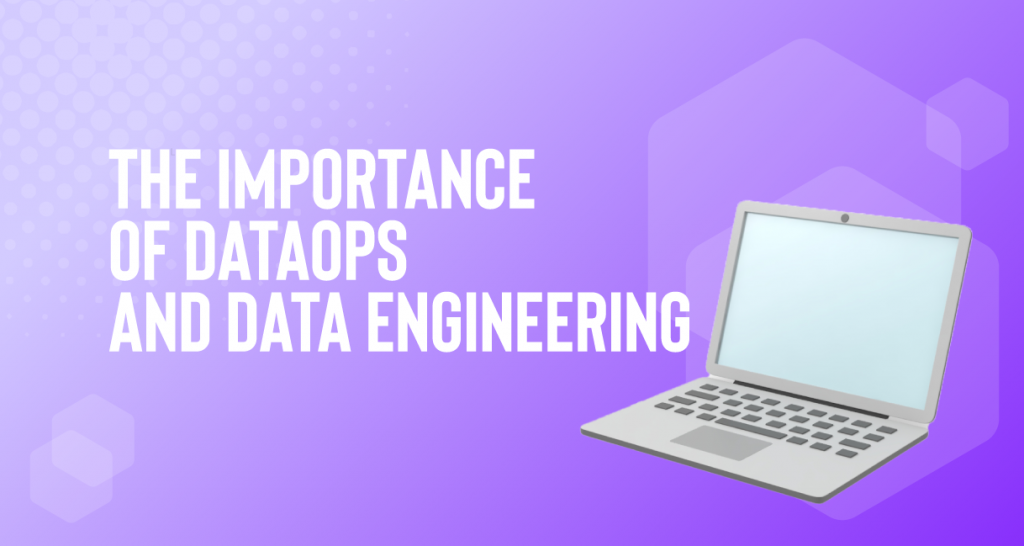DataOps is an automated, process-oriented methodology that analytic and data teams use to improve data analytics quality and reduce cycle time. While DataOps began as a collection of best practices, it has evolved into a distinct and new approach to data analytics.
The DataOps Methodology is intended to allow an organization to build and deploy analytics and data pipelines using a repeatable process. They can deliver high-quality enterprise data to enable AI by following data governance and model management practices.
DataOps is a set of technical practises, workflows, cultural norms, and architectural patterns that allow you to do the following:
- Rapid innovation and experimentation are delivering new insights to customers at a faster rate than ever before.
- Data quality is extremely high, and error rates are extremely low.
- Collaboration among a diverse group of people, technologies, and settings
- Clear results measurement, monitoring, and transparency
Reviewing DataOps’ intellectual history, exploring the problems it seeks to solve, and describing an example of a DataOps team or organization are the best ways to explain it. Our explanations begin at a conceptual level and quickly progress into pragmatic and practical terms. This, we believe, is the most effective way of assisting data professionals in comprehending the potential benefits of DataOps.

Why DataOps matters?
Data, data, and more data. With the exponential growth of data over the last 15 years, a need to sift through it to find answers to questions has arisen.
Big data technologies, which can easily scale and handle large amounts of data, first appeared in 2009 and haven’t stopped since. These technologies are rapidly maturing, and many legacy technologies, such as the traditional relational database management system, are being phased out. The term “DevOps” has emerged to go along with these new technologies. DevOps combines the operational side of the business with developer expertise to simplify the management of constantly changing systems that must scale. To build, deploy, and manage these technologies, new tools and techniques were developed, resulting in a revolution in how businesses manage their software pipeline.
In this area, a new trend called “DataOps” is gaining traction. While DevOps dealt with the software needed to run the operational side of the business, DataOps is concerned with the data. This includes data management and versioning, data models, and business intelligence queries, all of which rely on data availability at a specific point in time. Consider all of the SQL queries that have been written to power dashboards and other key performance indicators that are used to make business decisions. Queries and dashboards may break if the underlying model changes. A variety of data sources are used to create data models that generate new knowledge for a company. These data sources grow quickly, are typically unstructured, and must be cleaned and normalised after landing. When all of these details are added together, the system’s fragility becomes clear.
Creating a DataOps strategy is going to be critical to the long-term success of every business with a dependence on data. While a data scientist may write any variety of code such as R, Python, Scala, or even SQL, that is just code. The most critical detail is that all of that code has a very tight coupling to the data.
DataOps is not just about managing data science-related pieces of work that are created to deliver business value. DataOps is the combination of all of the data-related elements and software to run the operations of the business. Organizations looking to better deal with fast-growing data and big data technologies must adopt a DataOps approach.

How to learn DataOps?
Orchestration of data
Thousands of data transformation jobs are contained in modern analytical data platforms, which move hundreds of terabytes of data in batch and real-time streaming. Manually managing complex data pipelines takes a long time and is prone to errors, resulting in stale data and lost productivity.
The goal of automated data orchestration is to relieve data engineering and support teams of the burden of scheduling execution of data engineering jobs by using tools. Apache Airflow is a good example of an open source data orchestration tool, and it has a number of advantages:
Cloud-friendly with support to provision task executors on-demand using Kubernetes. Ability to orchestrate complex interdependent data pipelines. Robust security and controlled access with Kerberos authentication support, role-based access, and multi-tenancy. Support for a variety of pipeline triggers including time-based scheduling and data dependencies sensors.
Data monitoring
- Some DataOps articles refer to statistical process controls, which we call data monitoring.
- Data monitoring is the first step and precursor to data quality.
- The key idea behind data monitoring is observing data profiles over time and catching potential anomalies.
- The data analytics and data science teams can also use collected data profiles to learn more about data to quickly validate some hypotheses.
- The simple methods of data monitoring can be augmented by AI-driven anomaly detection.
The quality of the data
While data monitoring aids data engineers, analysts, and scientists in learning more about their data and receiving alerts in the event of anomalies, data quality capabilities take the concept of improving data trustworthiness, or veracity, to a new level. The primary goal of data quality is to automatically detect and prevent data corruption in the pipeline.
To achieve this goal, data quality employs three main techniques:
- Business rules – Business rules can be thought of as tests that run in the production data pipeline on a regular basis to see if data meets pre-defined criteria. It’s a fully supervised method of ensuring data quality and integrity. It necessitates the most effort while also being the most precise.
- Anomaly detection – Anomaly detection can be used for data quality enforcement and requires setting certain thresholds to balance precision and recall.
- Comparison with data sources – Data in the lake vs. data sources typically works for ingested data and is best used for occasional validation of data freshness for streaming ingress into the data lake. This method has the highest production overhead and necessitates direct access to systems-of-record databases or APIs.
Data quality jobs can be automatically embedded in the required steps between, or in parallel to, data processing jobs if a team already uses automated data orchestration tools that support configuration-as-code, such as Apache Airflow. This saves even more time and effort when it comes to monitoring the data pipeline.
Data governance
Although data governance is a broad term that includes people and process techniques, we will concentrate on the technology and tooling aspects. The data catalogue and data lineage are two aspects of data governance tooling that have become absolute must-haves for any modern analytical data platform.
Data scientists, analysts, and engineers can quickly locate required datasets and learn how they were created with the help of a data catalogue and lineage. Apache Atlas, Collibra, Alation, Amazon Glue Catalog, and Google Cloud and Azure Data Catalogs are all good places to start when implementing this capability.
Adding data catalogue, data glossary, and data lineage capabilities boosts the analytics team’s productivity and accelerates the time to insights.
Consistent delivery
One of the cornerstones and inspirations for the DataOps methodology is the DevOps concept. Modern tooling and a lightweight but secure continuous integration and continuous delivery process help reduce time-to-market when implementing new data pipelines or data analytics use cases, while DevOps relies on culture, skills, and collaboration.
The continuous delivery process for data, like regular application development, must adhere to microservices best practices. Such best practices enable the organization to scale, reduce the time it takes to implement and deploy new data or machine learning pipelines, and improve the system’s overall quality and stability.
Continuous data delivery processes, while similar to application development in many ways, have their own unique characteristics:
- Unit and functional testing with generated data should be prioritized due to large volumes of data.
- It is often impractical to create on-demand environments for each execution of the CI/CD pipeline due to the large scale of the production environment.
- For safe releases and A/B testing in production, data orchestration tooling is required.
- Data quality and monitoring in production, as well as data output testing, must be prioritised.
In the world of data engineering, traditional tools like GitHub or other Git-based version control systems, unit testing and static code validation tools, Jenkins for CI/CD, and Harness.io for continuous deployment find their primary application. Using data pipeline orchestration tools like Apache Airflow, which allow configuration-as-code, streamlines the continuous delivery process even more.
Although ITOps and DataOps are two separate disciplines, they are becoming increasingly intertwined. As a result, it’s critical for IT engineers to broaden their skill sets beyond traditional ITOps and contribute to data operations in many cases.
Fortunately, this does not necessitate returning to school for a data engineering degree. IT engineers already have the foundational skills for data operations in many ways. To support data operations, they simply need to expand their thinking and toolkits.
You can learn more about us by visiting our website, following us on Twitter, Facebook, and LinkedIn, and making your own decision. You can also send us an email to learn more about us. We’ll call you back to discuss why you should choose DevOpsSchool for your online training. A course led by experienced consultants who have years of experience implementing various DataOps solutions in top financial services firms. You can learn the insider tips, avoid the pitfalls, and most importantly, how DataOps can help you and your company as a whole.Dataops Fundamental Training